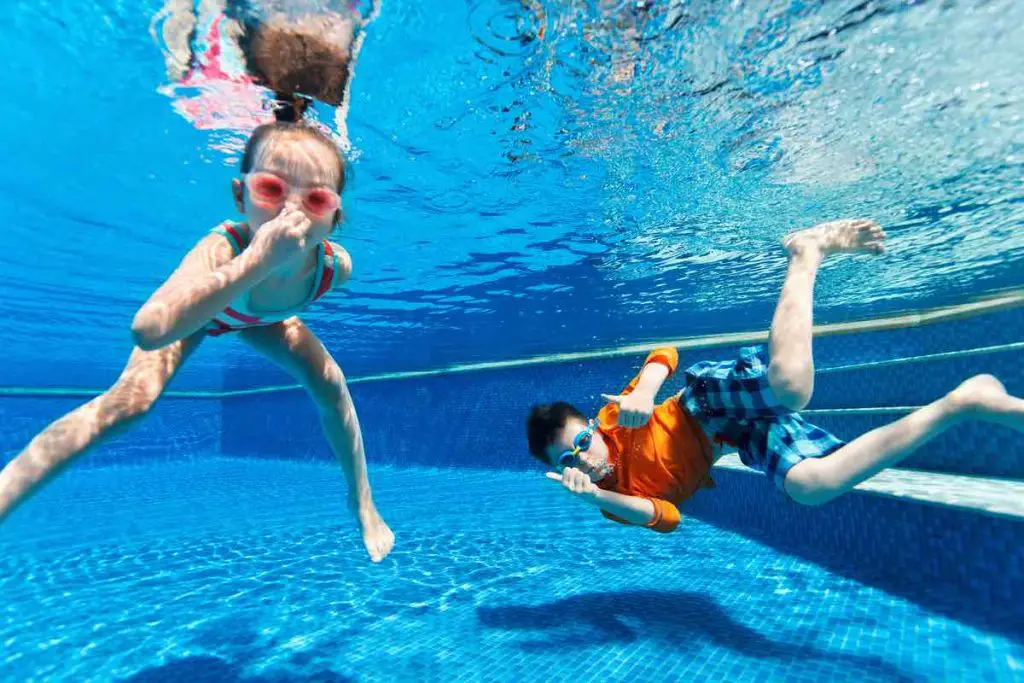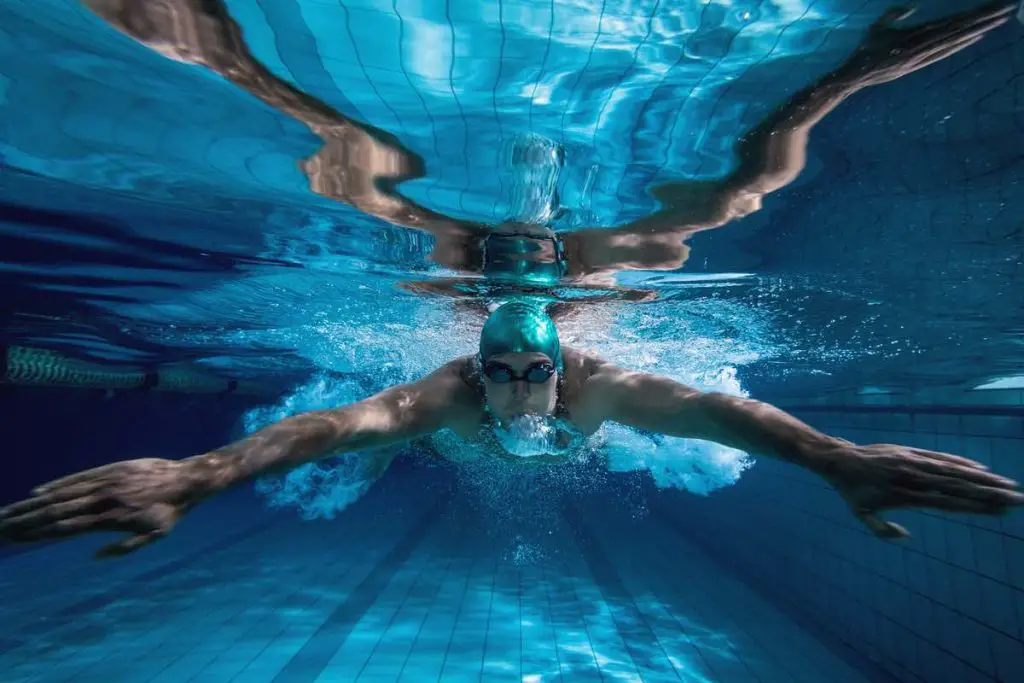Swimming is a healthy and exciting activity, but not everybody can enjoy it. Even skilled swimmers can sometimes encounter bouts of panic attacks or anxiety while in the water. It can result in hyperventilation, which can be a life-threatening situation.
You can avoid hyperventilation when swimming by regulating your breathing. After 3-5 strokes, take a quick breath through your mouth while your face is out of the water and exhale slowly through your nose while your face is underwater. Keeping this rhythm can prevent you from hyperventilating.
I will explain what happens when you hyperventilate when swimming and share tips on how to avoid such a situation. Let’s dive right in to see the details!

What Happens When You Hyperventilate When Swimming?
When humans breathe normally, we take in oxygen and expel carbon dioxide. The brain regulates this rhythm by monitoring the blood’s carbon dioxide and oxygen levels.
When carbon dioxide levels in the blood go beyond the safe threshold, the brain sends signals to urge you to breathe to expel the excess carbon dioxide and take in more oxygen. The brain also checks the oxygen levels – but to a lesser degree.
There are several reasons why people may hyperventilate when swimming, including:
- fear of the water
- anxiety
- panic attacks
Imagine swimming calmly in shallow waters, and when you try to stand up, your toes fail to touch the sand below the water. While some might not find this alarming, many inexperienced swimmers may panic.
Another example is when your arm or leg muscles suddenly cramp due to a lack of oxygen after an intense swimming routine. It can make any swimmer anxious, especially in deep or open waters. It can sometimes lead to hyperventilation.
Hyperventilating when swimming will make you expel more carbon dioxide and disrupt the brain’s ability to regulate your breathing. It makes you feel breathless, further aggravating your panic attack. This leads to flailing of arms and trying to force your way out of the water, using up your oxygen.
These intense movements use up your oxygen more quickly because muscles need oxygen to produce energy. The irregular heartbeat and blood pressure may also affect how much oxygen is delivered to your muscles.
When the muscles don’t receive enough oxygen but still need to contract, they will undergo anaerobic respiration or energy production without oxygen. The process results in lactic acid buildup, leading to muscle fatigue or cramps.
Furthermore, when there isn’t enough oxygen in the brain, you can lose consciousness in the water, which can be very dangerous.
Another thing to consider is that when panicking, swimmers bob their heads in and out of the water, not knowing when to breathe in or breathe out. As a result, they swallow some water, further clogging their airways.
It can result in a downward spiral and can be fatal. However, knowing the proper ways to avoid hyperventilation during swimming is a lifesaver.
Ways to Avoid Hyperventilation When Swimming
If you are an inexperienced swimmer, it is crucial to know some essential tips to avoid hyperventilation when swimming. It would also be best to learn them before you enter the water.
Here are some tips for avoiding hyperventilation when swimming:
Understand What Makes You Feel Calm
Anxiety or panic attacks can happen to anyone, anytime, whether you’re in the water, on land, or in the air. However, not everybody knows how to calm themselves down without the help of people around them.
Knowing how to calm yourself and understanding what makes you feel relaxed can help you get through most situations that trigger panic attacks, especially when swimming. Sadly, failure to calm yourself in the water can lead to deadly consequences.
If you are not confident that you can control your fears, it helps to swim with a partner you trust. It also helps if they are an excellent swimmer.
Trust in your partner swimmer is important because when you start to plunge into the downward spiral of hyperventilation, your faith in your partner can help you pull yourself together. Without trust, even an excellent swimmer can drown with you during your bout with a panic attack.
For instance, avoid reaching out to your partner immediately when you get a leg cramp. You can plan an emergency word or signal, such as “Help,” in advance. Focus on your breathing and wait until your partner comes to help.
Regulate Your Breathing
If you are a newbie to swimming, one of the first things you need to learn is how to breathe while in the water. Regulating your breathing while doing regular exercises is relatively easier than when you are swimming.
You need to maintain a breathing pattern where you inhale quickly through your mouth in the brief period your head is out of the water and exhale slowly through your nose when you dive your head back into the water.
While some people breathe in after every two strokes, following the 1-2-breath pattern, most swimmers breathe in every 3-5 strokes. You can count in your head until it becomes natural. It helps to practice various patterns to find which you are comfortable with. Following this pattern will help you avoid hyperventilating.
Avoid Voluntary Hyperventilation Before Swimming
Some swimmers might feel the need to hyperventilate before swimming, but it can be pretty dangerous. Even the American Red Cross strongly discourages voluntary hyperventilation before swimming.
Low carbon dioxide levels due to hyperventilation before swimming can give your brain the false impression that you have enough oxygen in your blood, preventing your brain from sending signals that will compel you to breathe.
It can deplete the oxygen supply to your brain, causing you to lose consciousness in the water and possibly drown.
Don’t Force Yourself to Swim in Strange Waters
Swimming in a new place can be scary or exciting, depending on the person. Either way, it’s best to test the waters before diving right in. For instance, the temperature of the water or the corals and other creatures below its surface can surprise you and cause a panic attack.
It helps to be extra cautious, especially if you have a history of hyperventilating when swimming. Try swimming in shallow waters first and gradually go deeper only when you become more confident.

Final Thoughts
It is crucial to know how to avoid hyperventilation when swimming so that you can stay calm in the water, even during unexpected circumstances.
Learn how to regulate your breathing while in the water and avoid swimming alone in strange waters. It is essential to follow these tips because they may be the only thing that can keep you from drowning.
Sources
- National Heart, Lung, and Blood Institute: How the Lungs Work
- Red Cross: ACFASP Advisory: Voluntary Hyperventilation Preceding Underwater Swimming
- WebMD: Lactic Acidosis and Exercise: What You Need to Know
- Seattle Athletic Club Downtown: Swimmer’s Basic Guide to Understanding and Avoiding Hyperventilation and Panic
- Swimming.org: How to Avoid Panicking in Open Water
